First Marriage Rate, 2023
Family Profile No. 1, 2025
Author: Natalie Bankey
Since 2008, the refined marriage rate in the U.S. has declined, dropping from 37.5 marriages per 1,000 unmarried males and females to 33.6 marriages per 1,000 in 2023 (Westrick-Payne, 2024). Over the same period cohabitation rates have continued to rise, reflecting a broader trend among younger adults to postpone marriage, with first marriages increasingly occurring at later ages (Brown et al., 2022; Manning & Loo, 2024). This shift positions marriage as a capstone experience, underscoring the importance of distinguishing first marriage rates from remarriage rates. Using the latest data from the American Community Survey, we examine the first marriage rate among males and females 18 and older. This Family Profile is an update to previous profiles on the first marriage rate (FP-23-17, FP-21-09, FP-20-01, FP-18-14, FP-16-18, FP-14-08, FP-11-12, and FP-10-05).
Trends in the First Marriage Rate for Males and Females
- Since 2008, the first marriage rate has declined slightly. For males, it decreased from 43.9 marriages per 1,000 never-married individuals in 2008 to 41.2 in 2023. Among females, the rate dropped from 49.8 to 45.4 marriages per 1,000 never married individuals during the same period.
- An estimated 1.87 million males and 1.80 million females experienced a first marriage in 2023.
Figure 1. First Marriage Rate for Males and Females, 2008-2023
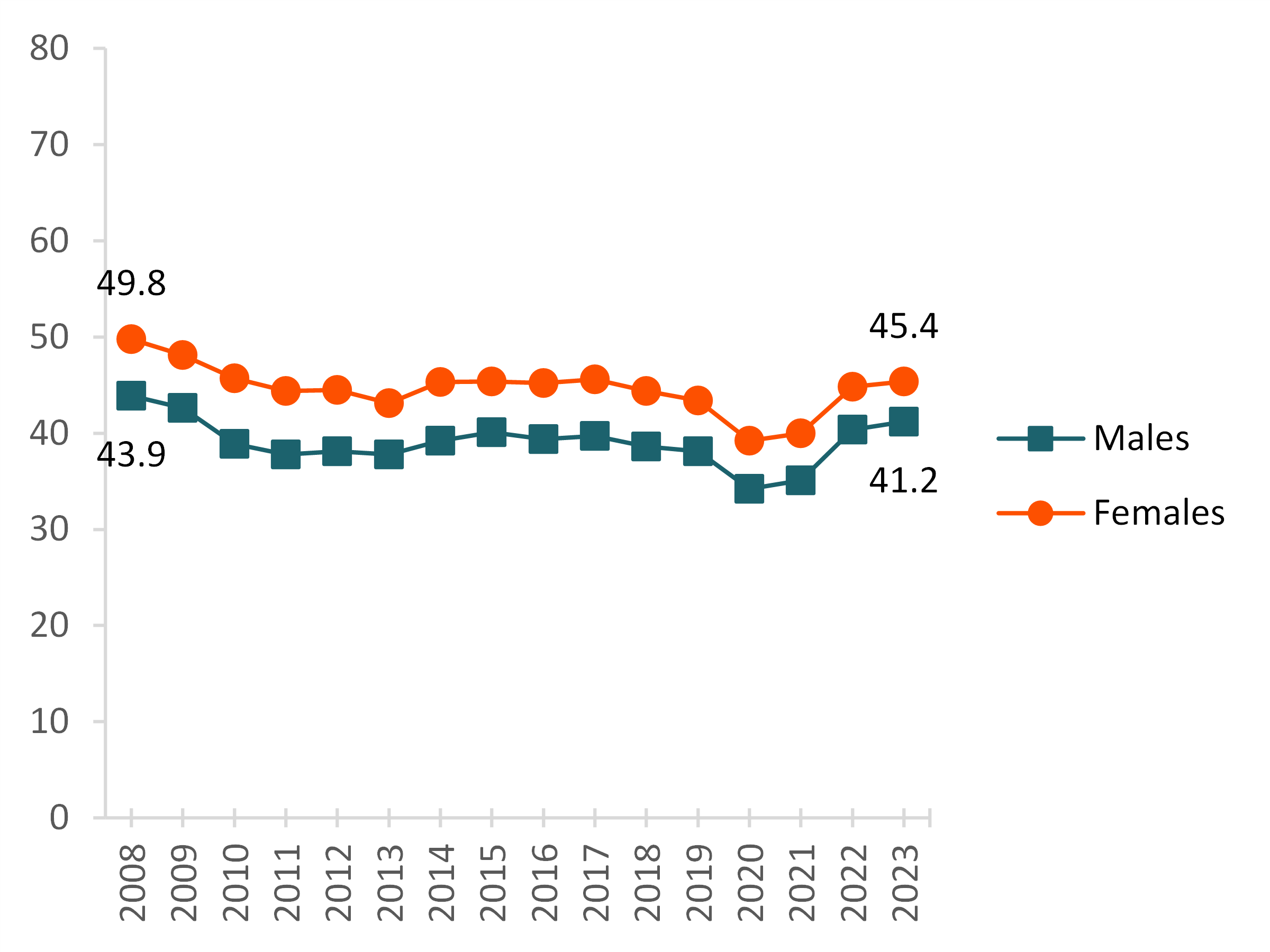
First Marriage Rate by Age for Males and Females
Figure 2. First Marriage Rate for Males and Females 18 and Older by Age, 2023
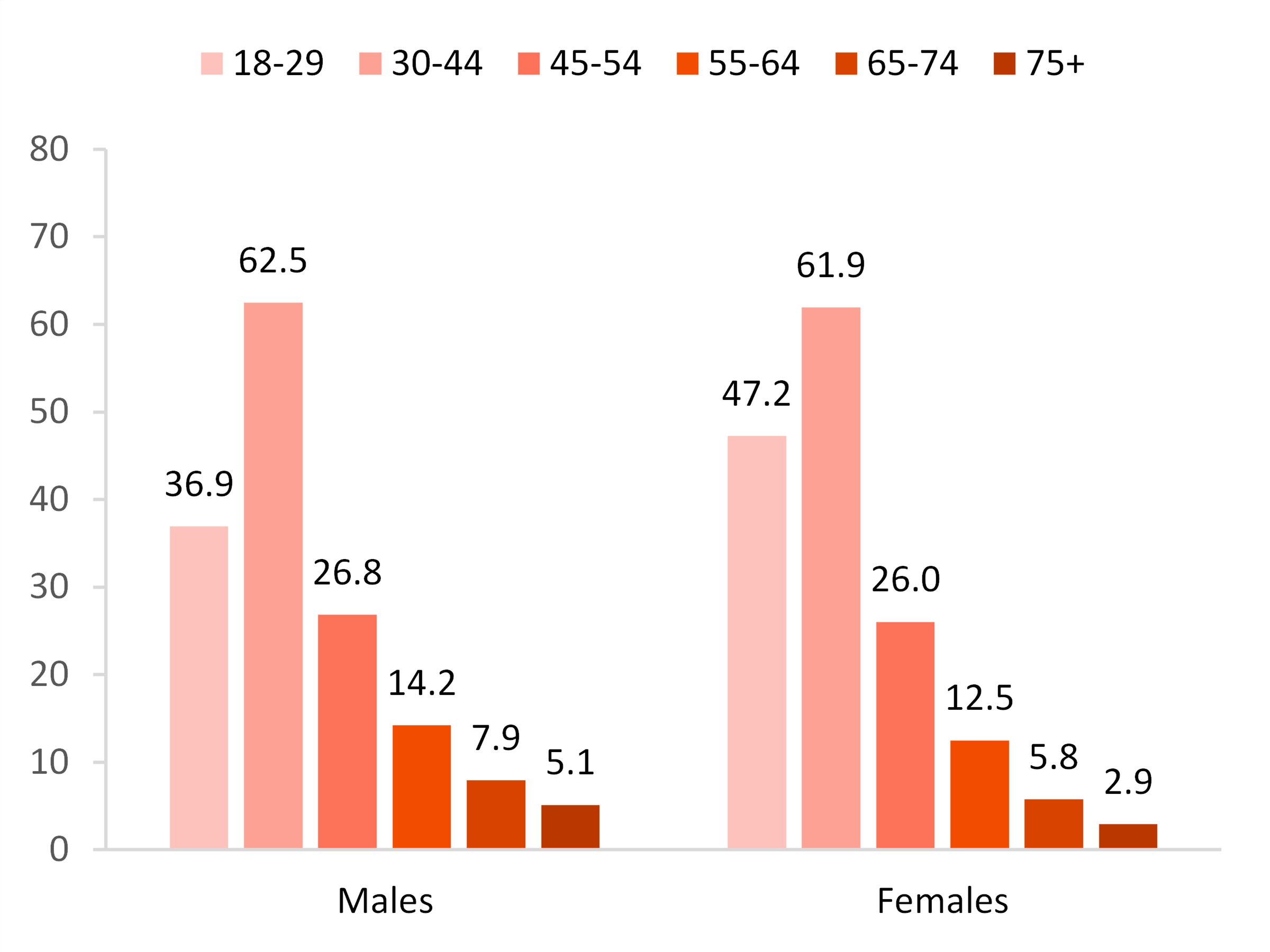
- The highest first marriage rates were among those aged 30 to 44 with 63.5 marriages per 1,000 never married males and 61.9 marriages per 1,000 never married females in 2023.
- The lowest first marriage rates were among those aged 75 and older, at 5.1 marriages among males and 2.9 marriages among females per 1,000 never married.
- As age increased the marriage rates of males and females diverged, with males increasingly marrying at higher rates than females (not shown).
First Marriage by Race, Ethnicity, and Nativity for Males and Females
- Both Asian males and females experienced the highest first marriage rates (51.4 and 63.9, respectively).
- Black males and females experienced the lowest first marriage rates (24.7 and 20.1, respectively).
- Females tended to have higher first marriage rates compared to their same racial/ethnic male counterparts, but in the case of Black adults, male first marriage rates were higher than their female counterparts.
- Foreign-born males and females had higher first marriage rates than their native-born counterparts (56.9 and 64.0, respectively).
Figure 3. First Marriage Rate for Males and Females 18 and Older by Race and Ethnicity, 2023
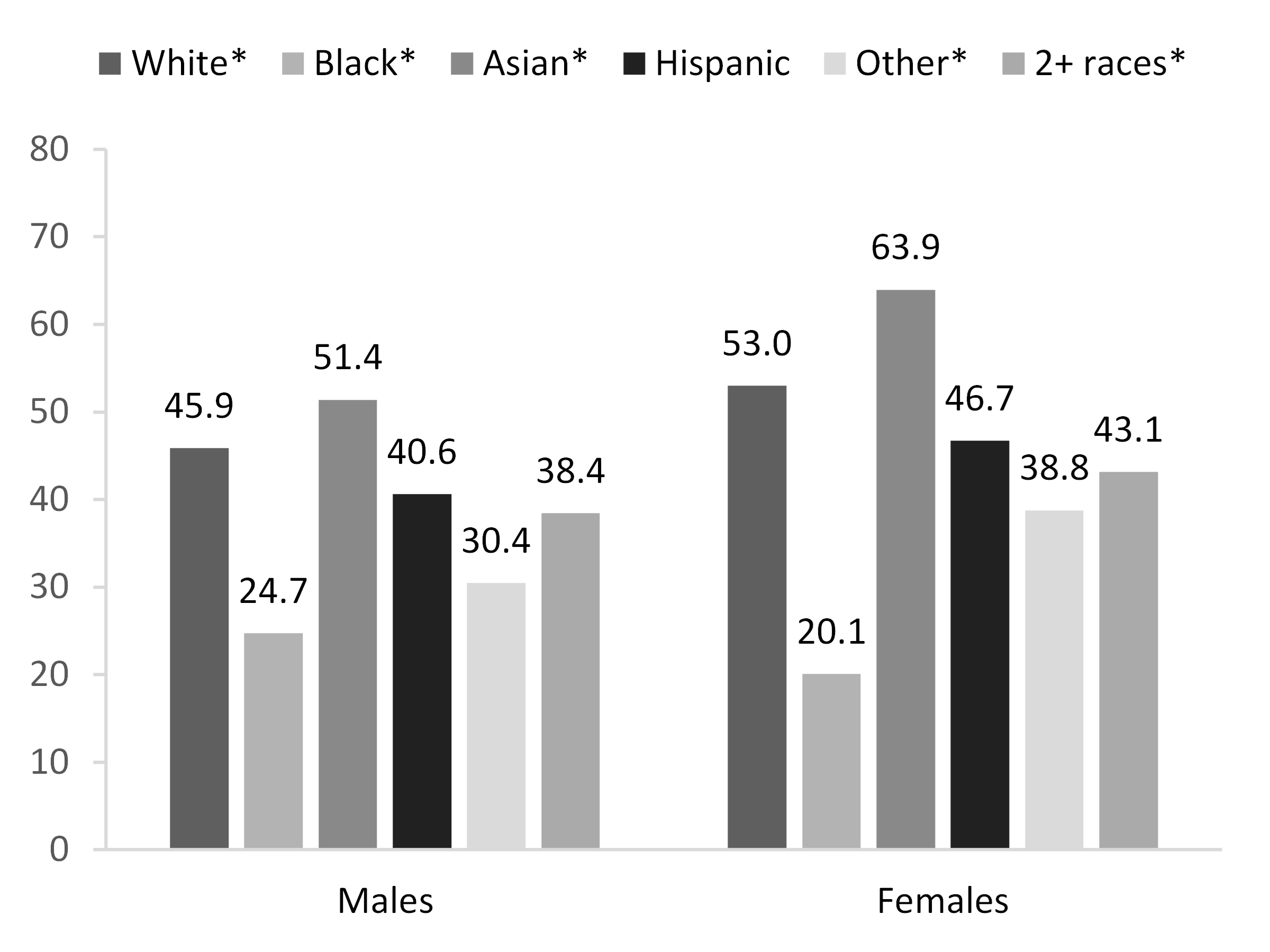
Figure 4. First Marriage Rate for Males and Females 18 and Older by Nativity, 2023
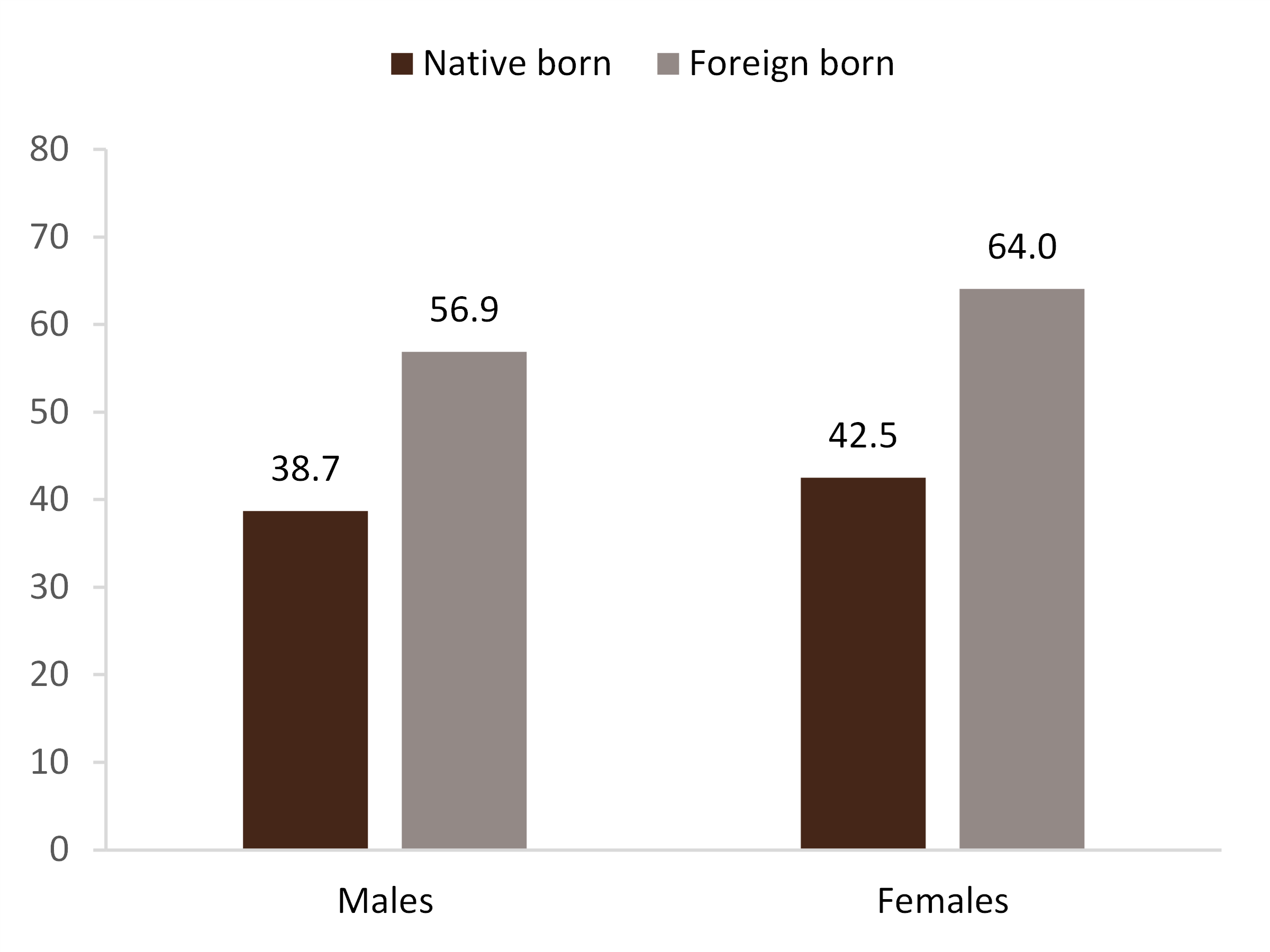
Source: NCFMR analyses of U.S. Census Bureau, American Community Survey, 1-year estimates, 2023 (IPUMS-USA)
Note: * Denotes non-Hispanic; The category “Asian” includes those who identified as Native Hawaiian and Other Pacific Islander (NHOPI) and the category “Other” includes those who identified as American Indian and Alaskan Native (AIAN) due to small sample sizes.
First Marriage Rate by Educational Attainment for Males and Females
- Males and females experienced similar patterns of first marriage by educational attainment.
- The highest first marriage rates were among those with the highest educational attainment (at least a master’s degree), with 83.9 and 84.1 marriages for males and females, respectively, per 1,000 never married.
- The lowest first marriage rates were observed among individuals with less than a high school education. In 2023, there were 26.9 marriages per 1,000 never-married males and 27.1 marriages per 1,000 never-married females.
Figure 5. First Marriage Rate for Males and Females 18 and Older by Educational Attainment, 2023
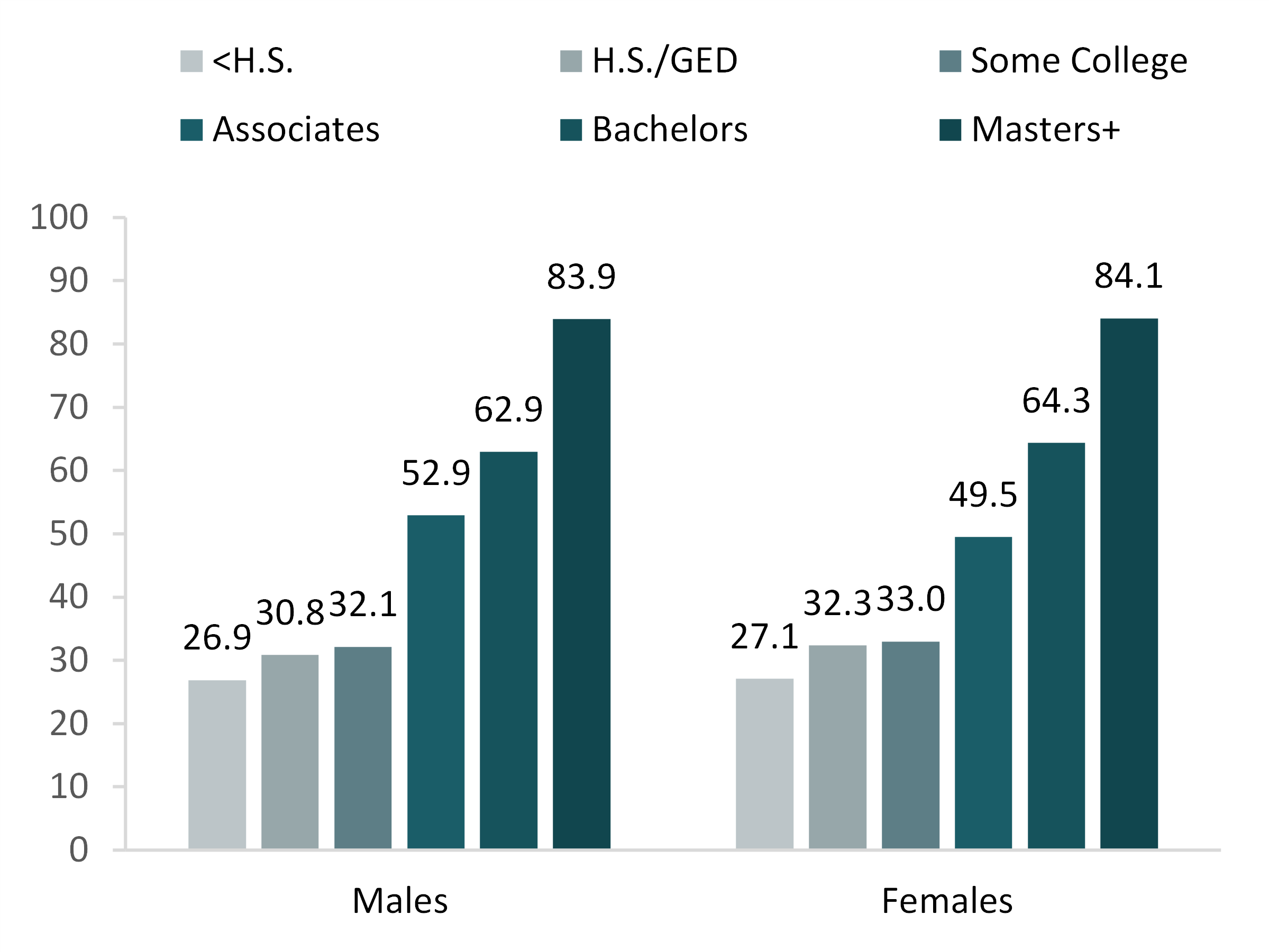
Data Source:
Flood, S., King, M., Rodgers, R., Ruggles, S., Warren, J. R., Warren, D., Chen, A., Cooper, G., Richards, S., Schouweiler, M., & Westberry, M. (2024). IPUMS USA: Version 15.0. Minneapolis, MN: IPUMS. https://doi.org/10.18128/D010.V15.0
References:
Anderson, L. R. (2016). First marriage rate in the U.S., 2014. Family Profiles, FP-16-18. Bowling Green, OH: National Center for Family & Marriage Research. https://www.bgsu.edu/ncfmr/resources/data/family-profiles/anderson-first-marriage-rate-2014-fp-16-18.html
Brown, S. L., Lin, I. F., & Mellencamp, K. A. (2022). The Rising Midlife First Marriage Rate in the U.S. Journal of Marriage & Family, 84(4), 1220–1233. https://doi.org/10.1111/jomf.12861
Manning W. D., & Loo, J. (2024). A decade of change in cohabitation across age groups: 2012 & 2022. Family Profiles, FP-24-03. Bowling Green, OH: National Center for Family & Marriage Research. https://doi.org/10.25035/ncfmr/fp-24-03
Payne, K. K. (2010). Rate of first marriage in the U.S., 2008. Family Profiles, FP-10-05. Bowling Green, OH: National Center for Family & Marriage Research. http://www.bgsu.edu/content/dam/BGSU/college-of-arts-and-sciences/NCFMR/documents/FP/Fp-10-05.pdf
Payne, K. K., & Gibbs, L. (2011). First marriage rate in the U.S., 2010. Family Profiles, FP-11-12. Bowling Green, OH: National Center for Family & Marriage Research. http://www.bgsu.edu/content/dam/BGSU/college-of-arts-and-sciences/NCFMR/documents/FP/FP-11-12.pdf
Payne, K. K. (2018). First marriage rate in the U.S., 2016. Family Profiles, FP-18-14. Bowling Green, OH: National Center for Family & Marriage Research. https://doi.org/10.25035/ncfmr/fp-18-14
Schweizer, V. (2020). First marriage rate in the U.S., 2018. Family Profiles, FP-20-01. Bowling Green, OH: National Center for Family & Marriage Research. https://doi.org/10.25035/ncfmr/fp-20-01
Stykes, B., Payne, K. K., & Gibbs, L. (2014). First marriage rate in the U.S., 2012. Family Profiles, FP-14-08. Bowling Green, OH: National Center for Family & Marriage Research. http://www.bgsu.edu/content/dam/BGSU/college-of-arts-and-sciences/NCFMR/documents/FP/FP-14-08-marriage-rate2012.pdf
Reynolds, L. (2021). First marriage rate in the U.S., 2019. Family Profiles, FP-21-09. Bowling Green, OH: National Center for Family & Marriage Research. https://doi.org/10.25035/ncfmr/fp-21-09
Westrick-Payne, K. K. (2023). First marriage rate, 2021. Family Profiles, FP-23-17. Bowling Green, OH: National Center for Family & Marriage Research. https://doi.org/10.25035/ncfmr/fp-23-17
Suggested Citation:
Bankey, N. (2025). First marriage rate, 2023. Family Profiles, FP-25-01. Bowling Green, OH: National Center for Family & Marriage Research. https://doi.org/10.25035/ncfmr/fp-25-01
This project is supported with assistance from Bowling Green State University. From 2007 to 2013, support was also provided by the U.S. Department of Health and Human Services, Office of the Assistant Secretary for Planning and Evaluation. The opinions and conclusions expressed herein are solely those of the author(s) and should not be construed as representing the opinions or policy of any agency of the state or federal government.
Updated: 01/27/2025 12:50PM

